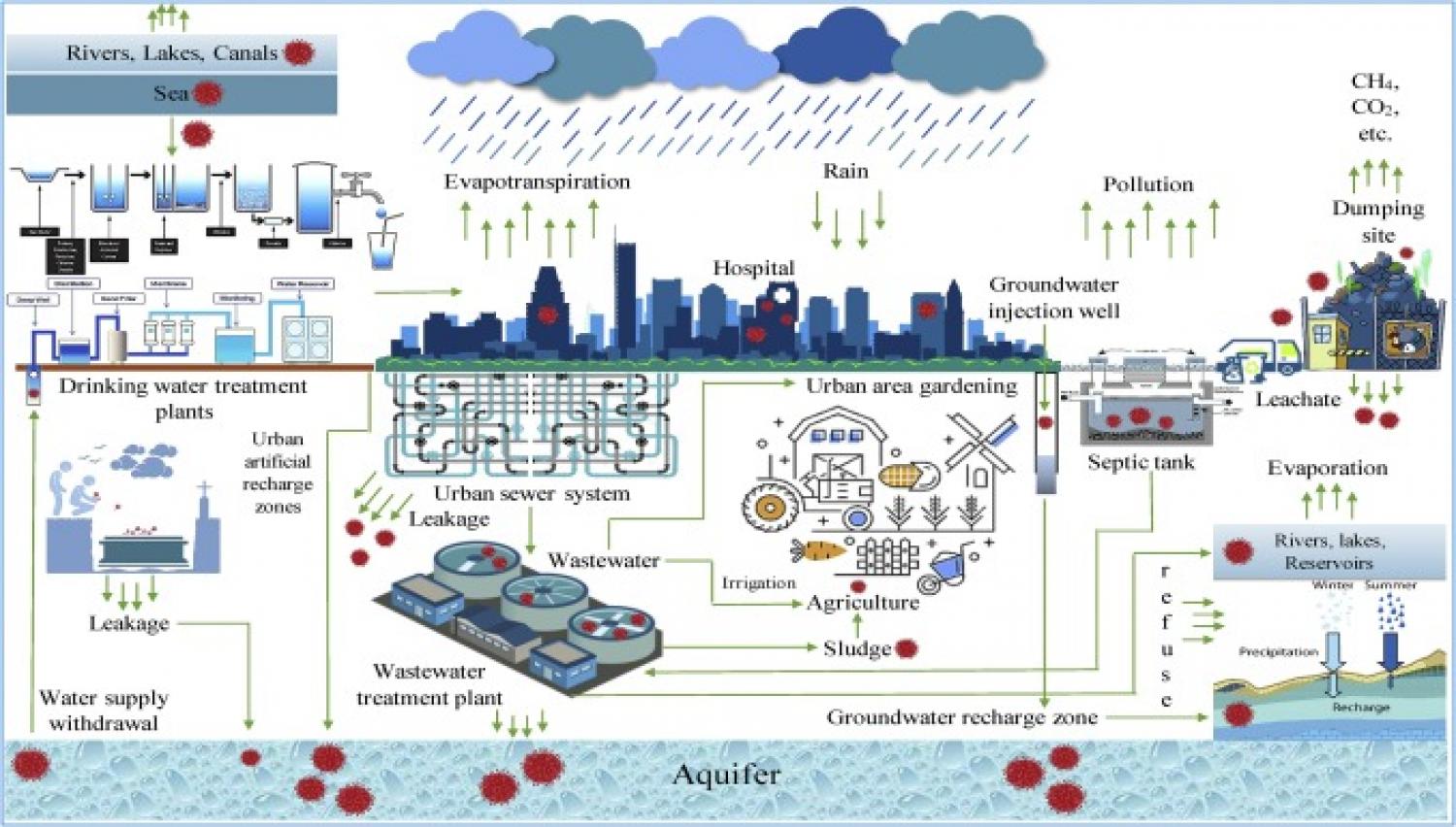
Elsevier, Journal of Hazardous Materials Letters, Volume 1, November 2020
Increased concern has recently emerged pertaining to the occurrence of severe acute respiratory syndrome coronavirus 2 (SARS-CoV-2) in aquatic environment during the current coronavirus disease 2019 (COVID-19) pandemic. While infectious SARS-CoV-2 has yet to be identified in the aquatic environment, the virus potentially enters the wastewater stream from patient excretions and a precautionary approach dictates evaluating transmission pathways to ensure public health and safety. Although enveloped viruses have presumed low persistence in water and are generally susceptible to inactivation by environmental stressors, previously identified enveloped viruses persist in the aqueous environment from days to several weeks. Our analysis suggests that not only the surface water, but also groundwater, represent SARS-CoV-2 control points through possible leaching and infiltrations of effluents from health care facilities, sewage, and drainage water. Most fecally transmitted viruses are highly persistent in the aquatic environment, and therefore, the persistence of SARS-CoV-2 in water is essential to inform its fate in water, wastewater and groundwater and subsequent human exposure.
